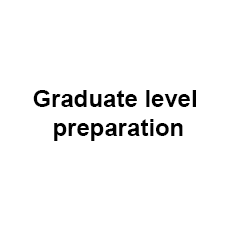Preparation for Hudson tests - abstract, verbal. numerical and personality tests
Find out how the Institute of Psychometric Coaching effectively prepares you through tailored practice tests, online courses and 1-on-1 coaching for your psychometric, aptitude and personality tests developed by Hudson.
About Hudson
Hudson is a very established recruitment agency that in the past 10 years also started developing their own psychometric test as a way to entre a different market segment which is candidates' assessment as well as staff training and development.
Hudson's cognitive or aptitude tests
Hudson offers a unique set of cognitive or aptitude tests and in two different levels of difficulty. Each level includes 3 tests measuring 3 types of abilities:
Hudson's abstract reasoning test -
Hudson's abstract test measures your conceptual reasoning skills. In this test Hudson use a unique style of abstract test questions to assess your conceptual reasoning and problem solving skills.
Hudson's abstract reasoning test timer
Hudson's abstract reasoning test is timed. The timer is set for each test question. You are given 90 seconds to complete each abstract test question.
Hudson abstract reasoning test questions style
Each Hudson's abstract test question incudes a list of original and final figures and a specific list of buttons that represent functions that convert the original figures into the final figures. Each button represents one function. In this style of abstract test questions, your task is to find what each specific button does in order to find how a specific original shape or shapes will change into the final figure. There are some examples of original and final figures and buttons displayed in a base scree, which you have to use to find what each button does. Once you find what the buttons do your then can find what the correct final figure is in the question line.
Let's examine the following Hudson abstract test question example:

In this Hudson abstract aptitude test question you need to find what buttons 1, 3 and 5 do.
From the first line, we see that the original figure (the three shapes to the left) goes through two transformations to form the figure on the right: (i) a change in the shapes (square to circle, or circle to square); and (ii) a change in colours (black to white, or vice versa). Two buttons are active in this line (1 and 2); however, we still don’t know which one changes the shape, or which one changes the colour.
The second line also shows a figure that swaps the colour of its three shapes, but there is no change in those shapes. This time, buttons 2, 3 and 4 are ‘active’ – so, button 2 (the only common ‘active’ button with line 1) must be the one that swaps colours; and we can now deduce that it is button 1 that changes (or toggles) the shapes. Buttons 3 and 4 must, then, be the ones that modify the horizontal and vertical lines, so we will need to refer to the third line to work out their individual functions.
In line three, because buttons 1 and 2 are ‘inactive’, we know that there will be no transformation of colour or shape. Buttons 4 and 5 are ‘active’, and we can see that the right figure has been made smaller and a vertical line removed. Line 3 shares only one active button with line 2 (i.e. button 4), and there is only one common transformation between these lines: the vertical line has been switched ‘on’ or ‘off’. Therefore, button 4 is a vertical line toggle switch, which means (from the previous line) that button 3 must be the on/off toggle for horizontal lines. Button 5, therefore, can only be for changing (or toggling) the size of the shapes in the figure (from big to small, or vice versa).
We can now summarise the button functions thus:
- Button 1 – toggles the shapes within the figure (squares to circles, and vice versa)
- Button 3 – toggles the horizontal lines on or off
- Button 5 – toggles the size (big or small) of the shapes within the figure.
Now, we can apply those button functions to our question line:
- Button 1 – will change the figure to a circle and a square.
- Button 3 – will add a horizontal line to all shapes in the figure.
- Button 5 – will toggle the shape sizes – the first from big to small, and the second from small to big.
The correct answer is:

Hudson's verbal reasoning test
Hudson's verbal reasoning test measures your ability to understand verbal information, think logically about written information, accurately draw logical conclusions, produce written reports, and convey information to others in a clear and simple manner.
Hudson's verbal reasoning test timer
Hudson's verbal reasoning test is timed. The timer is set for each test question. You are given 90 seconds to complete each verbal test question.
Hudson verbal reasoning test questions style
Hudson's verbal test questions include paragraphs of information, following by statements and questions relating to the paragraph. Your task is to accurately answer each question or statement based on the information provided in the paragraphs.
Let's review the following Hudson verbal aptitude example question:
Read the following passage and answer the question:
In epistemology, the Munchausen trilemma is a thought experiment used to demonstrate the impossibility of proving any truth, even in the fields of logic and mathematics. If it is asked how any knowledge is known to be true, proof may be provided. Yet that same question can be asked of the proof, and any subsequent proof. The Munchausen trilemma is that there are only three options when providing proof in this situation: (a) the circular argument, in which theory and proof support each other; (b) the regressive argument, in which each proof requires a further proof, ad infinitum; and (c) the axiomatic argument, which rests on accepted precepts. The trilemma, then, is the decision among the three equally unsatisfying options.
The name Munchausen Trilemma was coined in 1968 by the German philosopher Hans Albert in reference to a trilemma of “dogmatism versus infinite regress versus psychologism” used by Karl Popper. It is a reference to the problem of ‘bootstrapping’, based on the story of Baron Munchausen pulling himself and the horse on which he was sitting out of a mire by his own hair.
Which one of the following does NOT follow based on the content of the text?
a. Karl Popper was a German philosopher.
b. There are three argument options when providing proof of whether any knowledge is true.
c. The axiomatic argument is one which rests on accepted precepts.
d. When each proof requires further proof ad infinitum, it is called a regressive argument.
e. Baron Munchausen rode a horse.
To answer this style of test questions you need to read the passage to find the correct answer. Nowhere in the text does it mention Karl Popper’s origins. The text only says that Hans Albert was a German philosopher. Therefore, the correct answer is that Karl Popper was a german philosopher.
Hudson's numerical reasoning test
Hudson's numerical test measures your numerical reasoning skills. The test doesn’t measure your skills in maths but your ability to quickly and logically process numerical information.
Hudson's numerical reasoning test timer
Hudson's numerical reasoning test is timed. The timer is set for each test question. You are given 75 seconds to complete each numerical test question.
Hudson numerical reasoning test questions style
Hudson's numerical includes sets of 4 questions. Each set has unique background information and 4 test questions. The test is designed so you will have almost no time to complete answering all sets. Your task is to quickly select the correct answer for each test question based solely on the information presented.
Example Hudson numerical reasoning test question

What is the ratio of the differences in actual sales to target sales in Thailand and Italy during the fourth quarter?
a. 2:1
b. 3:4
c: 1:2
d: 4:3
e. 3:2
f. 2:3
To answer this test question, we need to review the information provided in the table. According to the table, Thailand’s fourth-quarter sales target was 550, but actual sales were: 205 + 105 + 260 = 570. This is a difference of 20 (570 – 550). Italy’s target was 600 sales, but actual sales were: 125 + 250 + 240 = 615. The difference here was 15 (615 – 600). Therefore, the Thailand to Italy ratio of differences is 20:15 = 4:3.
Practice and preparation for Hudson's psychometric tests
The Institute of Psychometric Coaching offer the best available opportunity to practise and prepare for Hudson's psychometric tests to get the job they really want. We offers online and tailored practise tests and 1-on-1 tutoring for Hudson's tests:
- Practice online tests mimicking Hudson's abstract verbal, numerical tests with timers to get the real experience of time pressure and full answer explanations at the end of each practice test.
- 1-on-1 coaching sessions delivered by experienced psychometricians and psychometric test trainers. In these session our special trainers will work with you to get you ready for your Hudson tests.
Hudson and other trademarks are the property of their trademark holders. None of the trademark holders are affiliated with the Institute of Psychometric Coaching or this site.













